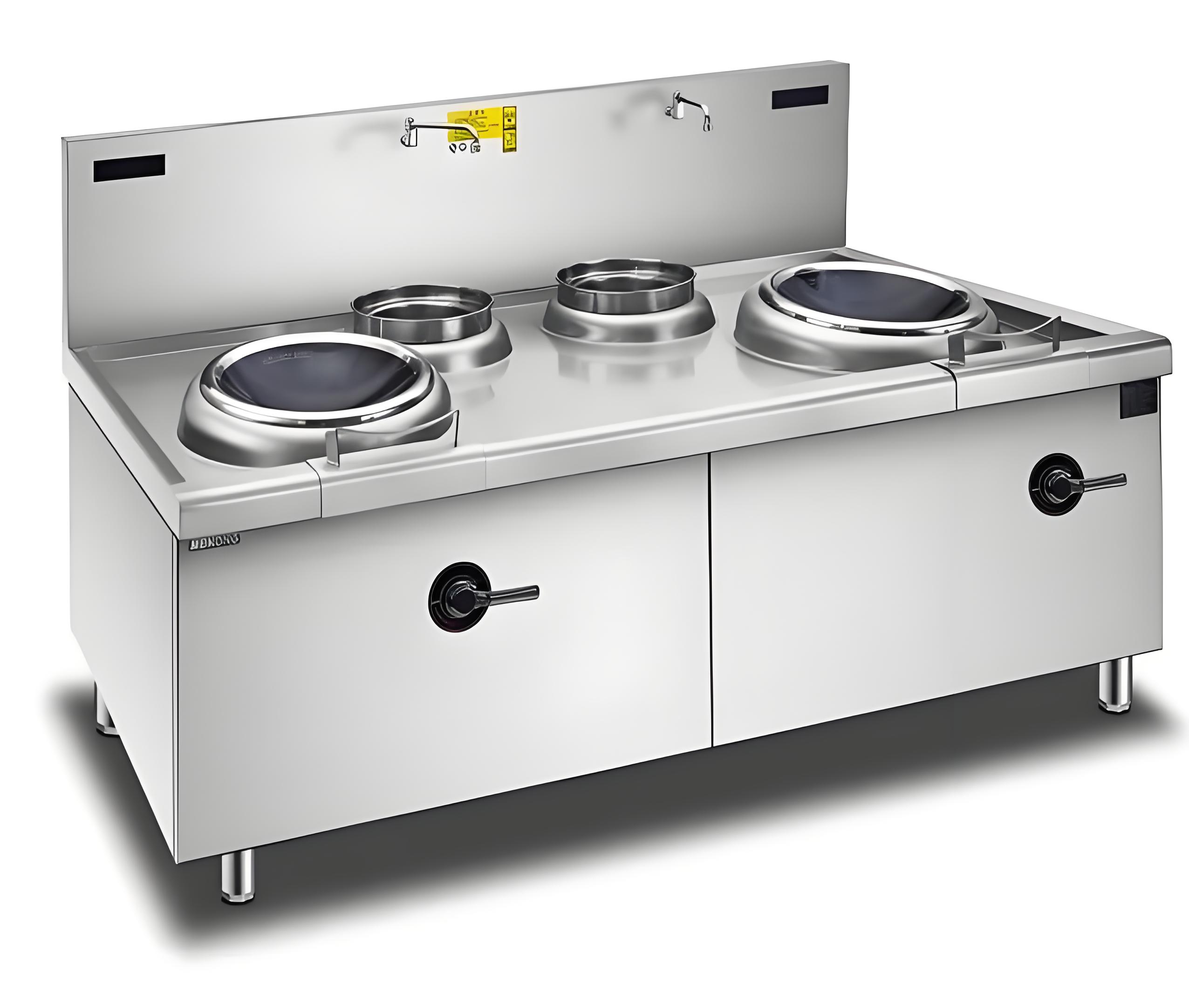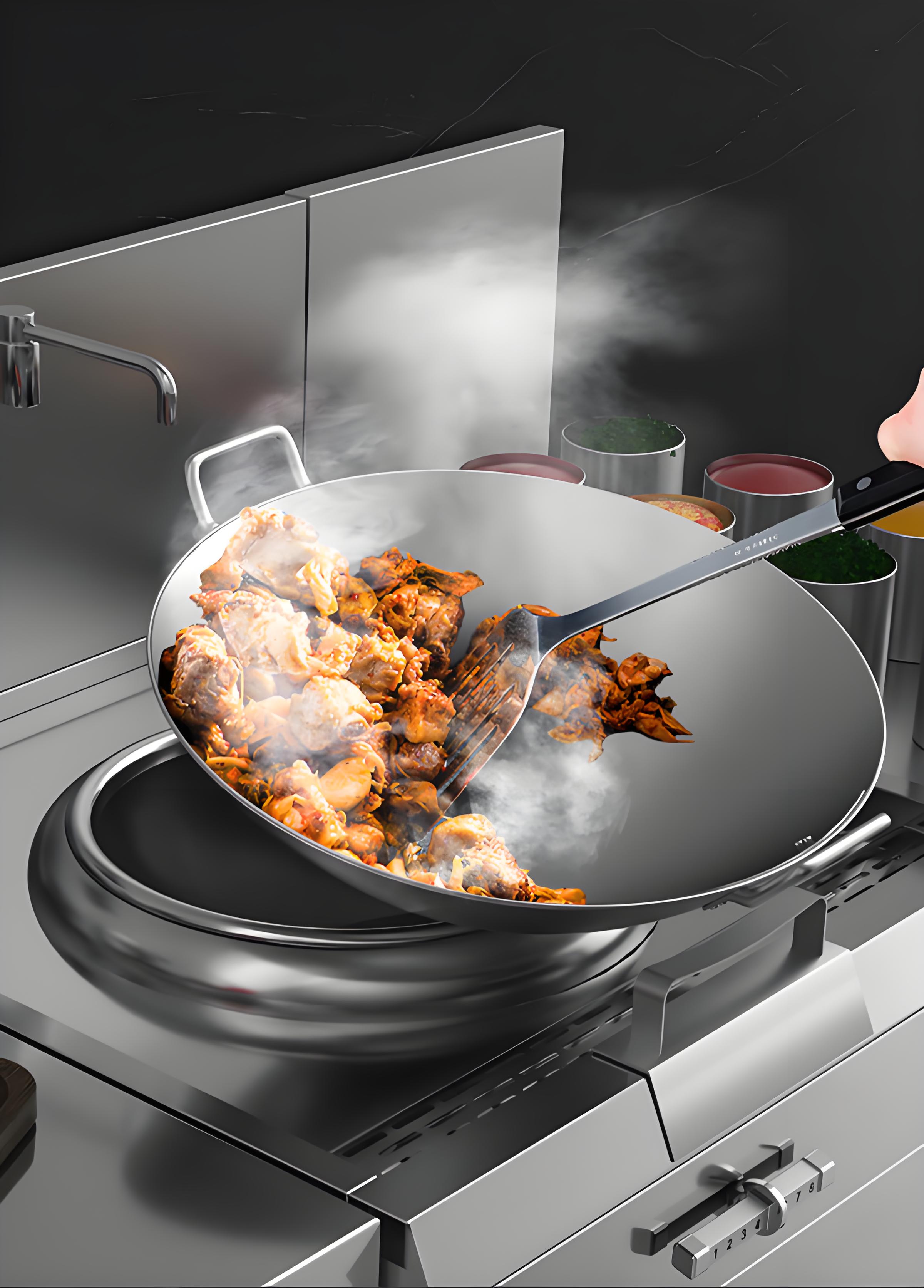If you’ve ever stood in the middle of a bustling restaurant kitchen — orders flying in, chefs barking, flames (or rather, in this case, induction coils) working overtime — you’ll understand how brutally demanding the environment can be on equipment.
I’ve spent over a decade in this industry, not just selling commercial induction cookers but also walking into the aftermath when something breaks down: kitchens at a standstill, frustrated owners, customers leaving. It’s precisely during those moments that one truth becomes glaringly obvious: cutting corners on equipment specs often turns out to be more expensive in the long run.
So let’s dive into why, when it comes to commercial induction cookers, “high configuration” isn’t just a fancy upsell — it’s usually a smart necessity.

What Does “High-Spec” Really Mean for a Commercial Induction Cooker?
I’ve noticed that the term “high configuration” tends to get thrown around a lot, sometimes by marketers who frankly can’t tell a SCR module from a safety relay. So let’s pin down what it actually means.
Generally, when we talk about a high-spec commercial induction cooker, we’re referring to features like:
More robust power electronics: IGBT modules from top brands (like Infineon or Fuji), thicker copper coils, industrial-grade capacitors.
Advanced control boards: Better power modulation, multi-stage protection, precise temperature control.
Stronger chassis and components: Stainless steel bodies, waterproof sealed panels, durable cooling systems.
Additional safety systems: Overheat sensors, voltage surge protectors, auto-shutdown features.
It’s not about unnecessary bells and whistles. It’s about building a machine designed to handle relentless workloads, day in, day out.
What Really Happens in a Busy Kitchen
Here’s something I see repeatedly: when someone first sets up their restaurant, they compare induction cookers primarily on price and wattage.
“8KW is 8KW, right? Why pay more for the same power?”
But commercial kitchens aren’t gentle environments. Your cooker is going to face:
Long continuous operation: Unlike home use where a stove might run 20-30 minutes at a time, commercial kitchens often keep burners running for hours.
Abrupt power cycles: Switching between full power and simmer dozens of times an hour.
Heat, oil, steam, metal utensils banging around.
Voltage fluctuations: Common in older or overloaded electrical systems.
It’s these conditions where a higher-spec unit proves its worth — not just in theoretical specs but in how it actually stands up to abuse.

A Simple Table to Show Differences
Here’s a quick, no-fluff comparison of what typically sets low-spec and high-spec commercial induction cookers apart. This isn’t from a catalog — it’s drawn from real teardown inspections I’ve done.
| Feature | Low-Spec Cookers | High-Spec Cookers |
|---|---|---|
| IGBT & control parts | Generic, no-name brands, sometimes rated close to max loads | Infineon, Fuji, with 30-50% headroom |
| Coil build | Thin copper, fewer windings, minimal insulation | Heavy multi-strand copper, high-temp insulation |
| Cooling system | Small fans, basic heat sinks | Larger turbine fans, intelligent thermal control |
| Protective circuits | Basic overheat cut-off | Layered: temp, current, voltage surge, water ingress detection |
I hear this reasoning all the time:
“It’s so much cheaper. Even if it breaks in 2 years, I can just buy another one.”
In practice, it almost never works out that cleanly. Here’s why:
Downtime costs more than hardware.
When your main wok station or stock pot stops working during dinner rush, you might lose thousands in a single night. Not to mention customer trust.
Repairs aren’t always quick.
Lower-end units often lack proper documentation. Finding replacement parts can be nearly impossible, leaving you forced to buy a whole new unit anyway.
Hidden inefficiencies.
Cheaper electronics often result in unstable power delivery — slightly slower heating times, inconsistent simmering, higher energy consumption. It adds up.
The Real Cost Over 5 Years
In case you think I’m exaggerating, here’s a rough lifetime ownership example I put together for a client last year, based on tracking energy bills, repair invoices, and kitchen downtime over a five-year period.
| Scenario | Low-Spec Cooker | High-Spec Cooker |
|---|---|---|
| Purchase cost (initial) | $600 | $1,200 |
| Avg. repairs & parts (5 yrs) | $900 | $300 |
| Extra downtime losses | $2,000+ | $400 |
| Energy inefficiency costs | ~$300 | negligible |
| Total over 5 years | ~$3,800 | ~$2,300 |

Consistency Matters More Than You Think
For many chefs, consistency is everything.
If your induction cooker can’t hold a steady simmer or if it takes 30 seconds longer to bring a large pot to a boil, it throws off the rhythm of the kitchen. Tickets back up, quality slips, the chef gets frustrated — and trust me, experienced chefs will notice.
I’ve had more than one executive chef pull me aside to specifically complain about an induction cooker that was “off by just a little.” Over time, that small irritation can be the difference between a smooth service and chaos.
Safety Isn’t Optional
There’s also a very practical safety argument. Cheaper machines may skip on:
Proper grounding checks (to save cost, some don’t fully isolate the chassis).
Multi-point overheat protection (they only have a basic cut-off tied to the IGBT temp).
Quality surge protection (so a voltage spike fries the board instead of harmlessly tripping a circuit).
I once inspected a kitchen that suffered a small electrical fire traced back to an overloaded low-quality induction unit. It had no real failover protection. Insurance companies get very picky about such things.
When Might a Lower Spec Be Okay?
To be fair, there are cases where a simpler or lower-end induction cooker works perfectly fine:
A small café or dessert shop where it’s only used a couple hours a day to heat milk or syrup.
As a backup or occasional-use station in a larger kitchen.
For training kitchens where they want to limit power intentionally for safety.
Even then, I always recommend verifying at least the basics: quality certifications, solid warranty support, clear wiring diagrams.

Practical Tips for Picking the Right Spec
From years of matching restaurants to the right machines, here’s how I usually guide people:
Estimate your daily usage hours honestly.
If it’ll run more than 4 hours/day continuously, lean high-spec. If over 8 hours, it’s almost mandatory.
Ask about the IGBT brand.
If your supplier can’t tell you, that’s a red flag. Infineon, Fuji, or Mitsubishi are gold standards.
Check the coil and insulation.
Heavier copper coils with proper insulation dramatically extend lifespan.
Look at the fan.
Tiny laptop-style fans on an 8KW unit? Recipe for early failure.
Check certifications.
CE, CB, ETL, CCC — depending on your country. These imply stricter safety and performance tests.
Wrapping It All Up
At the end of the day, buying a commercial induction cooker isn’t just about “watts for dollars.” It’s about reliability, safety, energy efficiency, and protecting your kitchen’s ability to serve customers day after day.
I’ve seen owners who tried to cut costs up front, only to pay for it many times over through repairs, downtime, and lost business. I’ve also seen businesses thrive because they invested a bit more into robust equipment that simply didn’t fail when it mattered most.
So when someone asks me “Why should I pay more for a high-spec commercial induction cooker?”, my answer is simple:
Because over the life of your business, it usually pays you back — many times over.

Related Q&A
Q: Can’t I just buy a cheaper one and upgrade parts later?
A: Not easily. The chassis, coil, and board designs are tightly integrated. Upgrading piecemeal often costs more than getting a quality unit to start.
Q: Are more expensive cookers always better?
A: Not necessarily. Pay attention to the source of the extra cost — is it robust internals or just a luxury brand name? That’s where a good dealer or technician can guide you.
Q: Does using a higher spec unit save on electricity?
A: Yes, slightly. Better electronics mean cleaner power conversion and fewer losses. But the bigger saving is indirect — fewer repairs and less downtime.
Q: What about induction ranges with fancy digital screens?
A: Nice for display, but ensure the core power electronics are solid. I’ve seen units with beautiful screens but cheap internals.




